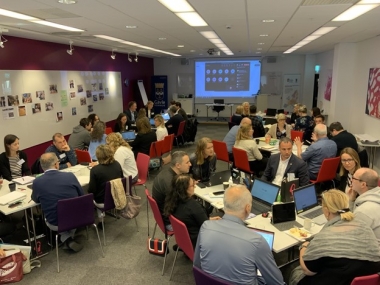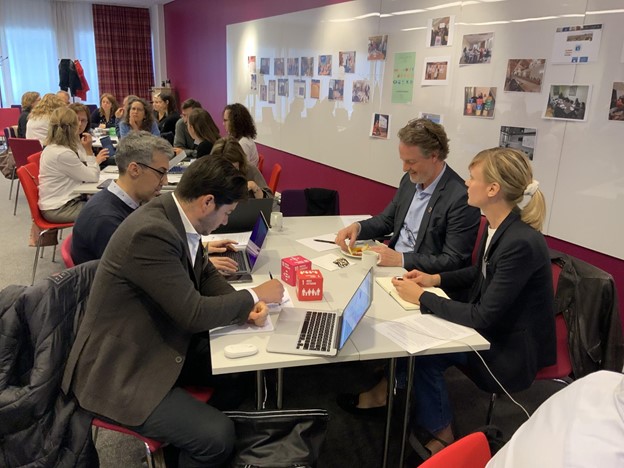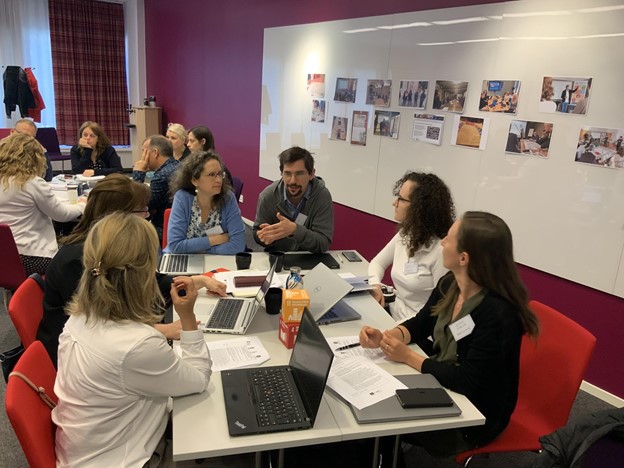Gävle's insight from latest TM7
Edited on
14 June 2022What does it mean to localize the United Nations Sustainable Development Goals (SDG) in a city or municipality? How does that actually work? On 23-25 May 2022 nineteen cities from across Europe met in Gävle, Sweden to figure out a practical answer to that question together.

This meeting was the mid-way point of the Global Goals for Cities project (GG4C) which is a nearly two-year collaboration of medium-sized European cities using the URBACT process for sustainable urban development. The process has three main steps: baseline analysis, vision creation, and action planning. In the action planning step, we work with both defining actions and setting measurable targets with relevant results indicators. This article looks at how Gävle municipality is using the process to make the UN SDGs an everyday reality at home.
On the agenda
The meeting agenda started by explaining the reason why Gävle is in the GG4C project in the first place. 
How can Gävle municipality:
- govern and lead based on a holistic perspective of sustainability
- implement sustainability in a way that improves our social, environmental and economic quality of life at the same time
- communicate and collaborate with Gävle’s residents and organizations so that our Sustainable Development Goals are brought to life in the way we live our life each and every day.
These are important big questions; and despite perhaps seeming abstract at first glance, the answers are actually practical and tangible.
The focus of the three day meeting was to measure how sustainable a city actually is. Granted that a meeting about measuring doesn’t sound like a particularly exciting way to spend one’s time. But it gets fun and meaningful when you see that measurements give you the knowledge to shape your future. Ponder this:
“Measure what you care about, because you are what you measure.
…If you can’t measure it, then you can’t improve it.”
- a paraphrasing of Peter Drucker
"The role of a leader is to define [measure] reality, then to give hope."
- Napoleon
Our conversations about localizing the Sustainable Development Goals become especially meaningful when you consider the UN Secretary General’s call to action:
“The planet's sustainability will be won or lost at the local level”
A claim backed up by these numbers:
- 1.75 planets are currently needed for humanity’s consumption and waste absorption. By 2030 we’ll need 2 planets.
- 55% of the world's population lives in cities. That’ll be two-thirds by 2050.
- 78% of the world’s energy is consumed by cities.
- 60% of greenhouse gases are produced by cities.
 Cities have an enormous impact on the earth and people’s lives. The meeting in Gävle was all about making that impact good, at home and everywhere, and bigger by collaborating.
Cities have an enormous impact on the earth and people’s lives. The meeting in Gävle was all about making that impact good, at home and everywhere, and bigger by collaborating.
Reality check
The Vision -
So what would “big good sustainable” impact look like in Gävle for example? In the GG4C project Gävle created a film to show our vision of what we want life in the municipality to be like by 2030, watch it here: https://vimeo.com/692362689/23f300d4f6
The Baseline -
What’s Gävle’s current reality? Gävle has three strategic programs, each doing loads of ambitious work to make the municipality an ever more fantastic place to live, work and visit - for real! Get to know them here:
- Environmental Strategic Program
- Social Sustainability Program
- Business Program
- And check-out our plans for Gävle’s growth by 2040: https://vimeo.com/692277083
The Action -
What we want, but don’t have yet, is a communication about Gävle’s way of reaching the Sustainable Development Goals in how we govern, operate and collaborate with people and organizations. We’re sculpting that communication now, starting with deciding what we want to measure.
A measurement of the Sustainable Development Goals is called an “indicator” and should be:
- Doable (not too hard to do)
- Useful to make people’s lives better tangibly and visibly around us.
- Relevant to the big picture ensure that we’re making progress on the global goals which the whole world has agreed to.
Here are some examples of Gävle’s local SDG indicators:
- The sale of locally produced biogas for fuel has increased by 35% from 2020 to 2025. (Environmental Strategy Program)
- A sense of safety in residential areas has increased (Social Sustainability Program)
- The employment rate in Gävle municipality has increased annually (Business Program)
 After gathering a variety of indicator measurements, the next step is to organize and analyze so that we conclude whether or not Gävle is in fact becoming more sustainable and realizing our vision for the life we want by 2030.
After gathering a variety of indicator measurements, the next step is to organize and analyze so that we conclude whether or not Gävle is in fact becoming more sustainable and realizing our vision for the life we want by 2030.
Pretty straight forward right? But data collection is only the start. Sustainability comes to life when people and organizations make the global goals truly their personal goals. This internalization is enabled by communication and engagement.
So the monitoring, evaluation, communication and collaboration with everyone who has a stake in Gävle (and the world) is an ongoing process. There is no one right way to do each step of the process; most important is to keep one’s eye on the goals and strive to reach them.
We are in fact making the Sustainable Development Goals a tangible reality in Gävle each and everyday - learning by doing, measuring and improving - the future is created here and now.
Submitted by Karin Luhaäär on
